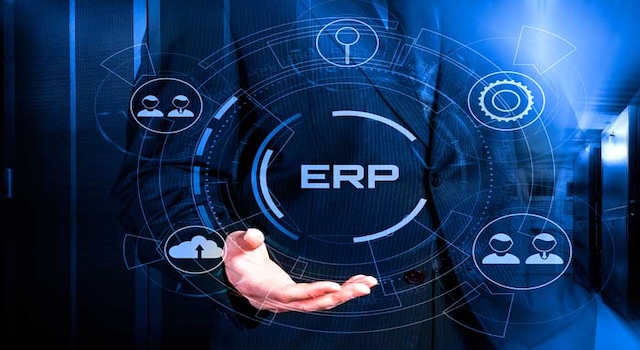Distribution
Manufacturing
ERP and the Future of Supply Chain Resilience in Distribution

Introduction: Global supply chains have been repeatedly stress-tested by trade wars, pandemics, raw material shortages, and transportation bottlenecks. For distributors, resilience has become as important as efficiency. Enterprise Resource Planning (ERP) systems are no longer just about transactional recordkeeping—they are evolving into platforms that empower distributors to build visibility, adaptability, and agility across the supply chain. This article explores how ERP supports supply chain resilience in distribution, the features that matter most, and best practices for implementation.
Why Supply Chain Resilience Matters
Traditionally, distribution companies prioritized efficiency: minimizing inventory, reducing carrying costs, and maximizing turns. But “lean” supply chains have proven fragile under disruption. Resilient distributors are shifting focus to:
- Visibility: End-to-end insight into inventory, supplier status, shipment locations, and demand signals.
- Agility: The ability to reroute orders, swap suppliers, and adjust distribution strategies quickly.
- Collaboration: Closer digital ties with suppliers, carriers, and customers to coordinate changes in real time.
ERP systems now embed analytics, automation, and integration capabilities to enable these resilience strategies.
ERP as the Digital Backbone for Distribution Resilience
A modern ERP platform integrates all supply chain functions, providing the single source of truth needed for fast decisions. For distributors, this includes:
- Multi-location Inventory Management: Real-time visibility into stock across warehouses, cross-docks, and third-party logistics partners.
- Supplier Relationship Management: Tracking lead times, performance, and risk scores so buyers can diversify or reallocate spend.
- Transportation and Logistics Integration: APIs with carriers, freight forwarders, and customs brokers to see shipment status without manual updates.
- Order Fulfillment Automation: Routing rules that dynamically shift orders between warehouses or suppliers based on constraints.
These features mean a disruption in one part of the network doesn’t paralyze the entire business. ERP allows distributors to pivot, rather than reactively scramble.
Key ERP Features That Strengthen Supply Chain Resilience
Not all ERP platforms are equal in resilience support. Distributors should focus on these capabilities:
- Real-Time Analytics & Dashboards: Instant visibility into inventory positions, supplier risks, and shipping delays.
- Demand Forecasting with AI/ML: Predictive analytics that account for seasonality, promotions, and external factors to reduce reliance on outdated models.
- Scenario Planning Tools: “What if” simulations for supplier loss, transportation delays, or demand spikes, helping decision-makers prepare contingencies.
- Risk-Based Supplier Management: Supplier scorecards that track risk indicators such as geographic exposure, financial stability, and delivery performance.
- IoT and Track-and-Trace Integration: Connecting sensors, RFID, and GPS data directly into ERP for near-real-time logistics visibility.
ERP thus becomes the command center for resilience, merging operational data with risk and forecasting intelligence.
ERP in Action: Building Resilient Distribution Strategies
Resilient distributors use ERP to implement strategies such as:
- Diversified Sourcing: Setting up supplier alternatives in ERP so purchase orders can shift automatically when preferred suppliers fail.
- Dynamic Safety Stocks: Using ERP-driven demand variability analysis to set flexible buffers rather than static min/max thresholds.
- Agile Order Fulfillment: Automatically routing orders to alternative warehouses if a location faces labor shortages or transportation delays.
- Transparent Customer Communication: ERP-driven portals that update customers on delays, substitutions, and shipment ETAs in real time.
These practices reduce disruption impact and build customer trust during crises.
Best Practices for ERP Implementation in Distribution Resilience
To maximize ERP’s value in building resilience, distributors should follow these practices:
- Map Critical Dependencies: Identify suppliers, lanes, and products most vulnerable to disruption and configure ERP to track them closely.
- Invest in Integration: Ensure ERP connects seamlessly with WMS (warehouse management), TMS (transportation management), PLM (product lifecycle), and external risk data providers.
- Enable Mobile Access: Field sales, warehouse staff, and logistics teams must be able to input and access ERP data remotely during disruptions.
- Embed Risk Analytics: Configure ERP dashboards to highlight exceptions, delays, and supplier performance issues rather than static KPIs only.
- Phase the Rollout: Start with high-value areas—such as multi-location inventory visibility—and expand to advanced forecasting and risk tools over time.
ERP should evolve as resilience priorities change, rather than being treated as a one-time project.
Measuring Resilience with ERP KPIs
Resilience is measurable. With ERP, distributors should track:
- Supplier on-time delivery rates
- Lead-time variability across suppliers
- Perfect order fulfillment rates under disruption
- Time-to-recover after a disruption event
- Percentage of orders successfully rerouted
- Customer satisfaction and retention during disruption periods
These metrics help evaluate whether resilience strategies are paying off or if ERP configurations need fine-tuning.
Change Management for a Resilient ERP Culture
ERP only drives resilience if employees know how to use it. Invest in training that teaches planners, buyers, and sales reps how to interpret dashboards, run “what-if” scenarios, and use ERP to make real-time decisions. Cross-functional training—linking sales, supply chain, and finance—ensures the system isn’t siloed. Encourage a culture of transparency and proactive risk-sharing across departments, with ERP as the enabling platform.
Future Trends in ERP and Supply Chain Resilience
Looking forward, ERP systems will further enhance resilience by embedding:
- AI-Driven Predictive Risk Management: Automatically flagging geopolitical, environmental, or financial risks that could affect suppliers or transport routes.
- Blockchain-Based Traceability: Immutable records of product provenance to improve trust and compliance in distribution networks.
- Deeper Ecosystem Integrations: Connecting with supplier ERPs, customer order systems, and logistics platforms for real-time collaboration.
- Autonomous Decision-Making: Automated reordering, rerouting, and allocation without human intervention in routine scenarios.
Distributors who adopt ERP platforms with these capabilities will future-proof their supply chains against the next wave of disruption.
Conclusion
ERP systems are central to building supply chain resilience in distribution. By providing real-time visibility, advanced forecasting, supplier risk management, and agile order fulfillment, ERP enables distributors to withstand shocks and recover faster. Success requires both the right platform features and a commitment to integration, change management, and continuous improvement. In the age of supply chain volatility, distributors who leverage ERP for resilience will not only survive disruptions—they will turn resilience into a competitive advantage.






